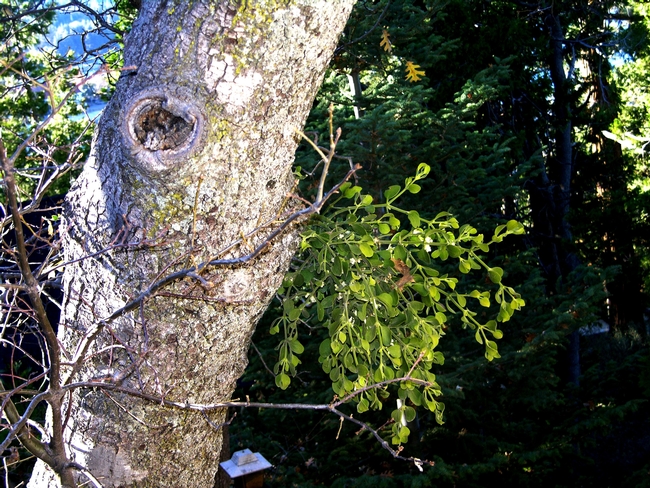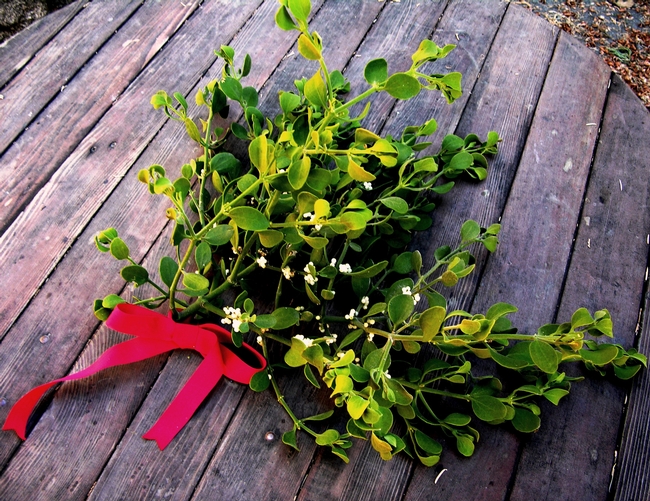Mistletoe, Friend or Foe? Holiday Cheer and Tree Health
The holiday custom of a kiss beneath the mistletoe comes to us from England. During the twelve days of Christmas, the English traditionally decked their halls with kissing boughs. Made of evergreens, apples and mistletoe, a kissing bough signified both goodwill, and romance. Anyone standing beneath the mistletoe surrendered a kiss. With each kiss, a mistletoe berry was picked, and when the berries were gone, kissing time was done.

With its velvety green leaves and pearly, translucent berries, mistletoe has long been a curiosity. It is the source of many traditions. Both Native American and European healers have used the plant for its medicinal properties. For the Celtic Druids, mistletoe was a symbol of protection, and peace. In Norse folklore, it is associated with the god Balder, the son of Odin and Frigg, and a favorite of his parents. As the tale goes, Frigg foresaw her son's death in a dream. To protect him, she enlisted the help of every plant and animal on earth, but she forgot about poor mistletoe. When Loki, a trickster, learned of Frigg's error, he used a small twig of mistletoe to strike down the young god. The devastated parents wished to resurrect their son. With help from the goddess of the underworld, and many tears shed in his honor, Balder, the light-bearer eventually returned. With him he brought brighter days, and the first signs of spring. Mistletoe's translucent berries were said to symbolize the tears of the gods, reminding the people of the cyclical nature of life, from loss to renewal.
We know mistletoe is a symbol of holiday cheer, but is the parasitic plant harmful to trees? Mistletoe Warriors is a
For more information on mistletoe management, visit the University of California Agricultural and Natural Resources Integrated Pest Management Program (UC-IPM) page on mistletoe management: http://ipm.ucanr.edu/PMG/PESTNOTES/pn7437.html
by Michele Martínez, Mountain Master Gardener